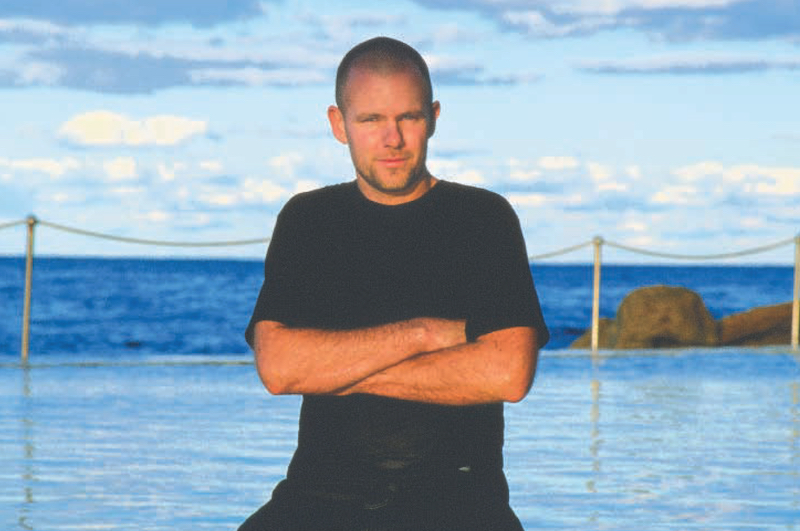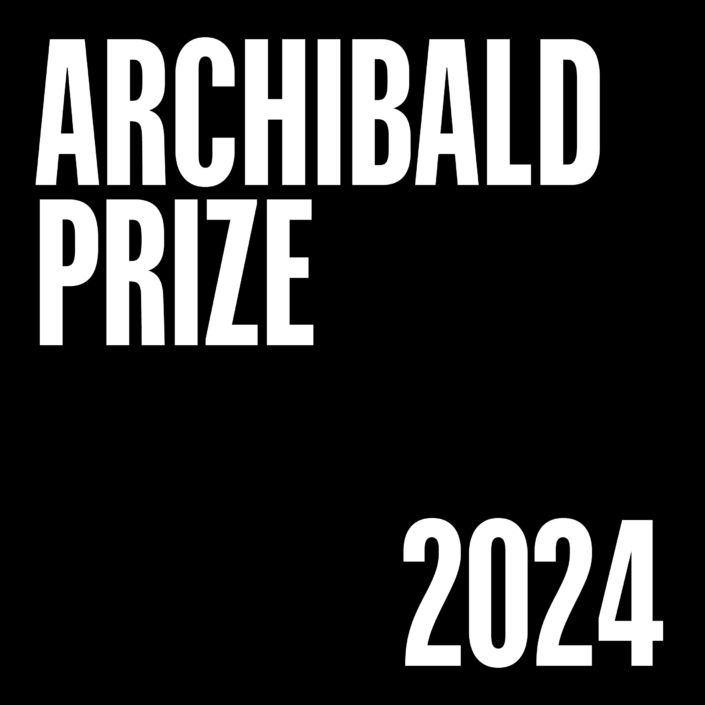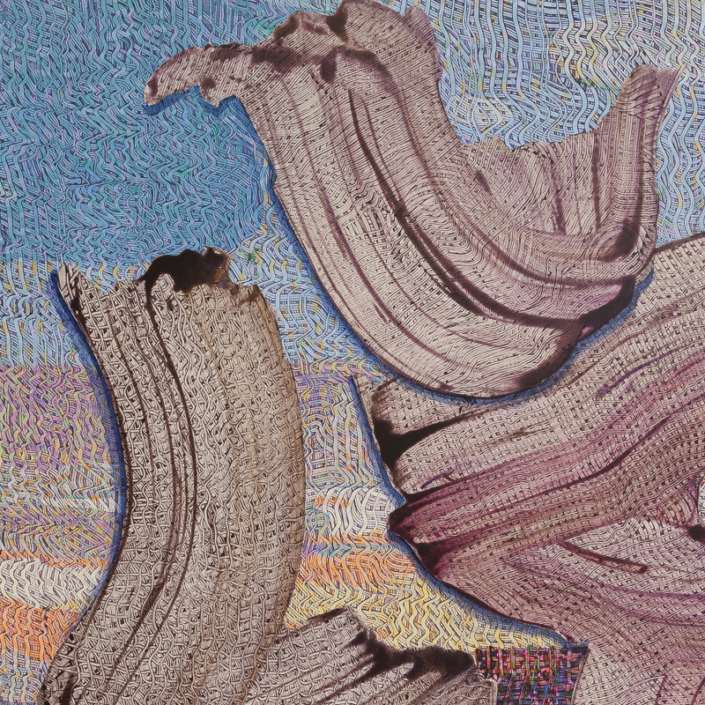Shaun Gladwell: Warp Speed
Like a skateboarder jumping a kerb, Shaun Gladwell’s art has taken off with a kick.
Words: Edward Colless
Photography: Josh Raymond
It’s hard to believe that Shaun Gladwell flashed into view in this magazine as an “Undiscovered Artist” back in 2001. That’s only three years ago, but he seems now to be firmly in place in the A-list of our most exciting and accomplished artists.
The speed of Gladwell’s ascent has been phenomenal, not only toward art world celebrity or notoriety but also into a maturity and confidence of statement that is as sharp conceptually as it is stylistically hip. And there’s no sign of it slowing down.
Gladwell had been exhibiting through the 1990s – before, during and after his art school degree in painting which he completed in 1996. But it was his 2000 exhibition at Sydney’s Artspace, Kickflipping Flâneur – a balletic cycle of slow motion videos with the artist skateboarding at Bondi and down Sydney streets – that both consolidated his jump from painting into photographic temporal media and marked out his individual talent as well as his distinctive subject matter. So impressive was this work, it won him a Samstag scholarship which took him in the next year to London’s stellar art school and centre of the Brit Pop phenomenon, Goldmsith’s, for a year of postgraduate study. It also gained him a three month residency at the Australia Council’s Paris studio in the Cité Internationale des Arts, which he took up en route to London.
When Gladwell had his Artspace show, Sydney had gone through the huge capital investment in infrastructure and urban laundering required for its staging of the Olympics. And the city authorities had scored some scandalous press from their strategy of not only fast-tracking redevelopment of derelict zones but also erasing traces of its homeless and feral street population. Kickflipping Flâneur was a sort of fragmented, documentary reclamation of the interstitial and transient social spaces that were being hidden or encrypted by the spectacular, authorised version of the Olympic city. Its ornate slow motion induces a hypnotic fixity on the choreography of flips and jumps, as if an MTV sequence or extreme sports program had been dilated with exhibitionist elation into a weightless, ecstatic state. Space here is as malleable and insecure as time. “Street skating”, said Gladwell at the time, “is a genre recoding architectural forms, and presents the greatest point of conflict with security and property owners.”
The flâneur in Gladwell’s title refers to a type of Parisian dandy of the nineteenth century who, as famously celebrated by the poet Charles Baudelaire, strolled or lounged in the city’s new arcades and boulevards, idling and indifferently observing the little dramas that happened in the streets and café-bars. Gladwell updates this inhabitant of modern middle class leisure time into a postmodern urban nomad, an underemployed slacker drifting along the migratory routes of the urban underclass. But there is a special skill in the skateboarder’s travelogue throughout the practice of the everyday. The original flâneur road a wave of surplus time and wealth associated with a newly emergent consumer economy. Manoeuvring with speed and agility through pedestrian traffic, the skateboard- er merges into the spectacle of an engineered global youth market. Sure, skaters are supersized consumers of youth brands. But as they invade public transit lanes or city squares, they metaphorically twist and turn street furniture, subverting its civic functions and reconfiguring it to suit their own purposes of play. In their different ways, the flâneur and the skater are creatures produced from radical topographical transformations of social space, and realignments in the axis of public and private experience across the city’s fabric, from the grand Parisian arcades to megamarts in suburban malls.
“I’d got into skateboarding and graffiti when I was maybe 12 or 13 years old, growing up in Sydney’s western suburbs,” Gladwell recalls, “and by 16 was dedicated to the point of being a competition skater.” Gladwell’s speciality was a genre of skateboarding known as freestyle, which doesn’t use ramps or half-pipes but is a virtuoso performance with the board on a flat concrete surface. You can see Gladwell freestyling in his 2003 video self- portrait, Storm Sequence, where he spins, rotates, steps, and pirouettes with the board on a bare wet concrete platform, like a theatre stage, in front of a boiling surf as a brooding storm hangs over him. Although he looms large in the frame, from a camera viewpoint low to the ground, he seems increasingly vulnerable against this backdrop, alone and self-absorbed, remote but open to impending harm. Slowed down and silent, his unhurried yet insistent gyrations look poetic; but equally they try our patience as he seems to be either foolhardy or ignorant of the ominous turn in the weather. The camera lens is spattered with the first flecks of rain, and can you feel the temperature dropping. It’s like watching a character in a disaster movie who obstinately won’t move out of the beach house until he finishes the computer game, even though a tidal wave is rolling in.
This sense of immediacy from an implied threat, balanced or challenged by an attitude of cool egoism, runs through most of Gladwell’s work. Skating with a video camera behind a boy on a BMX bike along a pavement, we follow the bike rider into a fast food store where he does a wheelie among the lines of customers and then scoots out onto the road again. It’s a cheeky transgression of the regulation of that sort of commercial space, and seems motivated by an adolescent thrill in violating a code that isn’t really physically dangerous but snubs a local authority by showing off. It’s a type of guerilla activity, hit and run. Yet in slow motion, with the camera floating and shadowing the bike as if depicting an out-of body experience, the scene emanates a slightly spaced out, even spooky ambience. Like a ghost cursed to repeat some blurry, half-remembered misdemeanour or frivolity, or perhaps a dreamer trying to catch up with his elusive, mischievous, obscure object of desire.
“My videos have skateboarding or breakdancing in them,” says Gladwell tellingly, “but in distorted ways. The dominant way of seeing these is as fast and furious, as macho. When I slow the actions down you see details; you see the play with gravity. It’s … graceful.” In the video called Tangara, grace and gravity couple in a simple technical device, but with an unearthly effect. Hanging upside down, seemingly effortlessly, from the passenger handrails in the centre of the empty carriage, Gladwell performs like a kid on monkey bars in a playground enjoying the sheer pleasure of turning the world on its head. “Tangara,” he explains, “is an Aboriginal word, used by the State Rail Authority as the name for some of its trains. It means something like, let’s go!” As the train takes a curve he sways slightly from side to side. The sequence is shot with the camera upside down, so that when projected he appears to be floating and lightly grasping the bars to stop drifting off endlessly into space. “Skateboarding redesigns the object that it uses, like a park bench. It’s really simple to transform space. It’s a direct action on the scene. In the same way, I wanted to find a para-function for the features of the train carriage. And when I did, it made me weightless.”
Tangara defamiliarises the commuter train, but transforms it into the space and imagery of a type of daydream. The weightlessness becomes a metaphor for drifting away from reality, perhaps through a mode of play that is similar to childhood fantasy. “Science fiction was one of my earliest interests, as a child. And, I admit, I keep going back to it. The concepts of science fiction for me as a child were immense, too big to process. In Star Trek the Enterprise travelled faster than light, at ‘warp speed’. Science fiction can propose things on a terrifying scale. It’s our way of expressing an older idea: the sublime.”
These themes converged on a majestic, cinematic scale at the recent Melbourne blockbuster survey exhibition, 2004, where Gladwell showed Godspeed Verticals, commissioned for the show by the Australian Centre for the Moving Image. On one of the two screens of this work, two breakdancers perform in exquisite slow motion on the deserted platform of a brightly lit, high tech subway station. Between routines they ride dreamily up or down the escalators, alone and patiently waiting to start the action over again as if it were an addictive but blissful ritual they are compelled to repeat. It seems to be simple documentary footage, but the subway has an uncanny feel, as though this could also be the transit to another world or a spooky fantasy about the end of time.
On the other screen, human bodies seem to fall from the top of the image to the bottom, like rain in a dark void or like the damned falling into hell. As you look closer, you see that they’re simply lying stretched out on skateboards and rolling across a warehouse floor with the camera positioned overhead, looking straight down. Spotting the mechanics of the illusion isn’t hard, but it doesn’t dispel the strangeness of the image. Gravity is both defied and re-instated. We see these nameless bodies flash by for an instant in the rapture of speed, against eternity. This is a sort of sci-fi and also street level sublimity. Perhaps it is simply a childlike game, but perhaps Shaun Gladwell’s art is also producing an image of spiritual transport in an entirely new idiom.
This article was originally published in Art Collector issue 30, OCT – DEC 2004.









